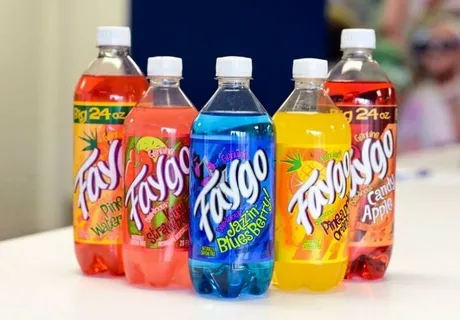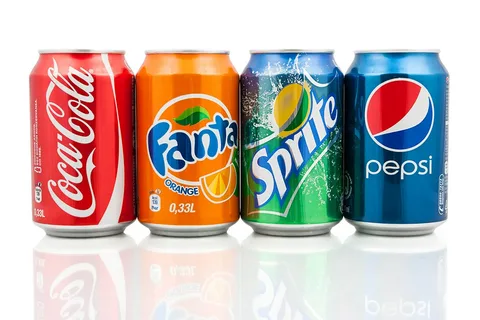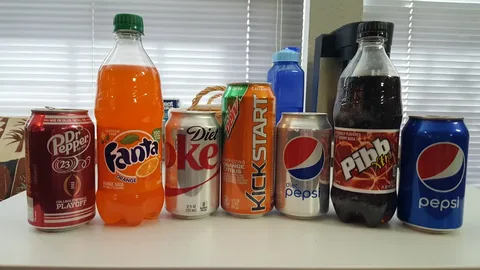Introduction
Soda pop, or soft drinks, has been a favorite beverage for generations, providing refreshing, fizzy enjoyment for people of all ages. But in today’s rapidly evolving consumer landscape, the soda industry is at a crossroads. With health-conscious consumers, environmental concerns, and advancements in technology, the soda pop market is being transformed in new and exciting ways. In this article, we’ll explore the future of soda pop, how innovation is reshaping the industry, and what lies ahead for one of the world’s most beloved beverages.

The Evolution of Soda Pop: A Brief History
Soda pop has a long and storied history, dating back to the 18th century when mineral waters were first bottled and sold. By the 19th century, soda had become a popular drink with the invention of carbonated water. Brands like Coca-Cola and Pepsi, which started as medicinal tonics, quickly grew into iconic global powerhouses.
Throughout the 20th century, the soda industry flourished, driven by mass production, advertising, and the introduction of a wide variety of flavors. However, with the rise of health consciousness in the 21st century, the industry has faced new challenges. Consumers began to question the high sugar content, artificial additives, and environmental impact of the industry.
The Shift in Consumer Preferences: Health and Wellness
One of the most significant changes impacting the soda industry is the increasing demand for healthier alternatives. Consumers today are more aware of the health risks associated with excessive sugar intake, including obesity, diabetes, and heart disease. As a result, traditional sodas, often laden with sugar and artificial sweeteners, are losing popularity.
1. The Rise of Low-Sugar and Zero-Calorie Beverages In response to these health concerns, soda companies have been innovating with low-sugar and zero-calorie options. Brands like Diet Coke and Pepsi Zero Sugar have been around for years, but there is now a renewed focus on reducing sugar content without compromising taste. New sweeteners like stevia and monk fruit are being used to offer a healthier alternative to traditional sugar-laden sodas.
2. Functional Beverages: More Than Just Refreshment Another trend gaining momentum is the rise of functional beverages. These are drinks that offer more than just refreshment—they provide health benefits, such as added vitamins, probiotics, or adaptogens. Brands are incorporating ingredients like green tea, kombucha, and natural herbs into their sodas, appealing to health-conscious consumers who want a drink that contributes to their well-being.

Sustainability and Environmental Innovation
With growing awareness of environmental issues, soda manufacturers are being pushed to rethink their packaging and production processes. The use of plastic bottles and aluminum cans has long been a source of environmental concern, with billions of containers ending up in landfills or polluting oceans. This is prompting the soda industry to innovate in ways that prioritize sustainability.
1. Eco-Friendly Packaging One of the most significant shifts in the soda industry is the move towards eco-friendly packaging. Companies are experimenting with biodegradable or fully recyclable materials. Coca-Cola, for instance, has developed a prototype of a paper bottle, and other brands are exploring plant-based packaging solutions. Refillable bottles and cans are also gaining traction as consumers become more mindful of their environmental footprint.
2. Reducing Carbon Emissions Soda production is a carbon-intensive process, but brands are making efforts to reduce their environmental impact. From sourcing ingredients sustainably to investing in renewable energy, companies are taking steps to lower their carbon emissions. PepsiCo, for example, has set a goal to achieve net-zero emissions by 2040. These initiatives not only help the planet but also appeal to environmentally conscious consumers who want to support responsible brands.
Technology-Driven Innovation: Smart Soda Machines and Customization
Technology is playing a critical role in the future of soda pop, from production to distribution and customer experience. One area where innovation is thriving is in smart soda machines, which allow consumers to customize their drinks and enjoy a more personalized experience.
1. The Rise of Self-Serve Soda Machines Many fast-food chains and restaurants now feature self-serve soda machines, such as Coca-Cola’s Freestyle dispenser, which allows customers to create their own beverage by mixing different flavors and ingredients. These machines use advanced technology to track consumer preferences and offer data-driven insights to companies. This level of customization appeals to modern consumers who value individuality and want to have a say in what they consume.
2. Home Soda Machines: Convenience and Customization The home soda machine market is also expanding. Brands like SodaStream have revolutionized how people consume soda, allowing users to create their own carbonated beverages at home. This not only provides convenience but also gives consumers control over the ingredients, enabling them to reduce sugar or avoid artificial additives. As more consumers seek healthier, personalized options, home soda machines will likely continue to grow in popularity.
The Role of Artificial Intelligence and Data in the Soda Industry
Artificial intelligence (AI) and data analytics are transforming how soda companies understand consumer behavior and improve their products. By analyzing consumer preferences, AI-driven systems can help brands create new flavors, optimize supply chains, and enhance marketing efforts.
1. Predicting Trends with AI AI can help companies predict future consumer trends by analyzing large datasets, such as social media activity or purchasing behavior. This allows brands to stay ahead of the curve by launching new products or adjusting existing ones to meet evolving tastes. For instance, PepsiCo uses AI to track flavor trends and develop innovative new products.
2. AI-Powered Marketing and Customer Engagement AI is also transforming marketing strategies within the soda industry. By using algorithms to analyze consumer data, brands can deliver personalized marketing messages that resonate with individual preferences. Additionally, AI-powered chatbots are becoming a common tool for customer service, helping brands engage with consumers more efficiently and effectively.
Craft Sodas and the Rise of Small-Batch Brands
As consumers move away from mass-produced sodas, there has been a surge in demand for craft and small-batch sodas. These artisanal beverages offer unique flavors and ingredients, often sourced locally or sustainably. The craft soda movement mirrors the rise of craft beer, with consumers looking for distinctive, high-quality products.
1. Unique Flavors and Ingredients Craft sodas are known for their bold and unique flavors, from ginger-lime to lavender lemonade. These sodas often use natural ingredients and avoid artificial preservatives, appealing to consumers who prioritize quality and authenticity. Many small-batch brands also experiment with non-traditional sweeteners like honey or maple syrup, offering a healthier alternative to mainstream sodas.
2. Supporting Local and Independent Producers The craft soda movement also taps into the growing consumer interest in supporting local and independent businesses. By purchasing craft sodas, consumers can feel good about supporting smaller companies that prioritize sustainability and ethical practices. This trend is likely to continue as more people seek out artisanal, small-batch beverages that align with their values.

What’s Next for the Soda Industry?
As the soda industry continues to evolve, we can expect even more exciting innovations in the years to come. Here are a few trends that are likely to shape the future of soda pop:
1. Plant-Based Sodas With the rise of plant-based diets, soda companies are exploring ways to incorporate plant-based ingredients into their products. This could include using plant-based sweeteners, natural flavorings, or even infusions of plant extracts like CBD or adaptogens.
2. Enhanced Nutrition As consumers continue to seek out healthier options, we may see sodas fortified with additional nutrients, such as vitamins, minerals, or antioxidants. These functional sodas could blur the line between soft drinks and health supplements, offering consumers a refreshing beverage that also boosts their health.
3. Personalized Beverages With advancements in AI and machine learning, personalized beverages could become the norm. Consumers may be able to create their own soda blends based on their unique tastes and dietary preferences, either through smart soda machines or home-based systems.
Conclusion
The soda industry is undergoing a profound transformation as it responds to changing consumer preferences, environmental concerns, and technological advancements. From healthier ingredients and eco-friendly packaging to AI-powered customization and craft soda innovation, the future of soda pop is full of possibilities. For soda companies, staying ahead of these trends will be key to remaining relevant in an increasingly competitive market. For consumers, the future promises a wide array of exciting, flavorful, and healthier soda options.
As we look ahead, one thing is clear: soda pop is here to stay, but it will continue to evolve in ways that reflect the values and preferences of modern consumers. Whether you’re a fan of classic colas, innovative craft sodas, or functional beverages, the future of soda pop is bubbling with potential.